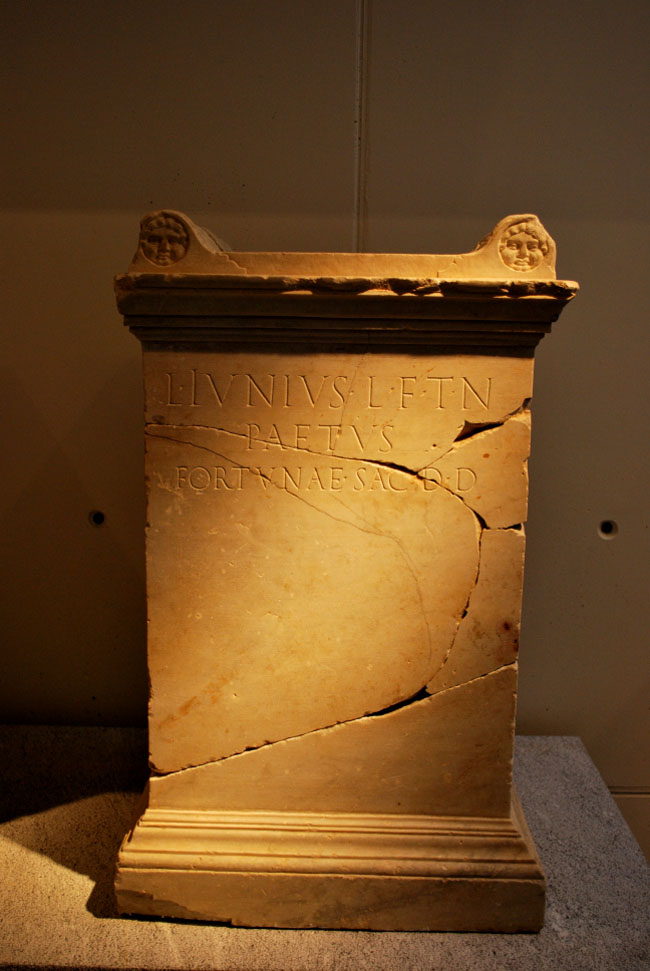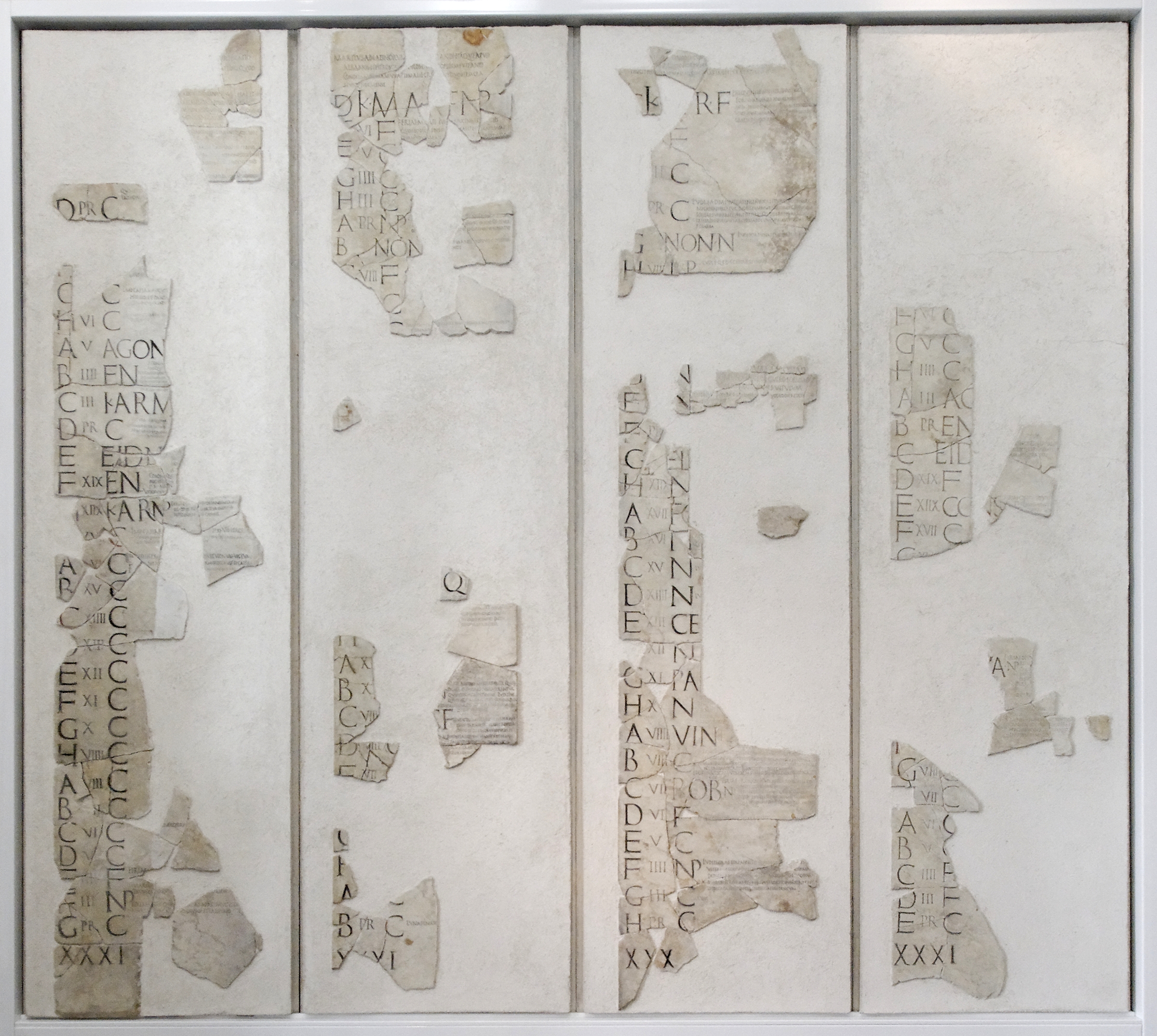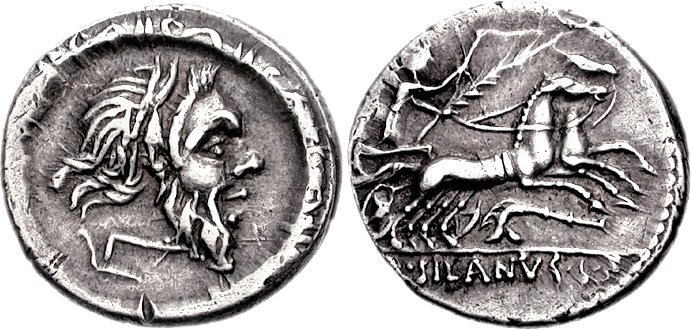|
Fasti Antiates Maiores
The Fasti Antiates Maiores is a painted wall-calendar from the late Roman Republic, the oldest archaeologically attested local Roman calendar and the only such calendar known from before the Julian calendar reforms. It was created between 84 and 55 BC and discovered in 1915 at Anzio (ancient Antium) in a crypt next to the coast. It is now located in the Palazzo Massimo alle Terme in Rome, part of the Museo Nazionale Romano, while a reconstruction of it is in the Museo del Teatro de Caesaragusta in Zaragoza, Spain. Background Anzio lies about 58 km south of Rome in the region of Latium. In the sixth century, at the latest, the Latins inhabited the region of Latium, remaining independent of Rome until 338 BC. Rome first took control of the region in the Latin War after the Battle of Trifanum and incorporated it into the incipient Roman empire. Description The ''Fasti Antiates maiores'' consist of two fragments of the thirteen month calendar and the List of Roman con ... [...More Info...] [...Related Items...] OR: [Wikipedia] [Google] [Baidu] |
Fasti Antiates, Palazzo Massimo Alle Terme, Rome
In ancient Rome, the ''fasti'' (Latin plural) were chronological or calendar-based lists, or other diachronic records or plans of official and religiously sanctioned events. After Rome's decline, the word ''fasti'' continued to be used for similar records in Christian Europe and later Western culture. Public business, including the official business of the Roman state, had to be transacted on ''dies fasti'', "allowed days". The ''fasti'' were the records of this business. In addition to the word's general sense, there were ''fasti'' that recorded specific kinds of events, such as the ''fasti triumphales'', lists of triumphs celebrated by Roman generals. The divisions of time used in the ''fasti'' were based on the Roman calendar. The yearly records of the ''fasti'' encouraged the writing of history in the form of chronological ''annales'', "annals," which in turn influenced the development of Roman historiography. Etymology ''Fasti'' is the plural of the Latin adjective ''fas ... [...More Info...] [...Related Items...] OR: [Wikipedia] [Google] [Baidu] |
Leap Month
Intercalation or embolism in timekeeping is the insertion of a leap day, week, or month into some calendar years to make the calendar follow the seasons or moon phases. Lunisolar calendars may require intercalations of both days and months. Solar calendars The solar or tropical year does not have a whole number of days (it is about 365.24 days), but a calendar year must have a whole number of days. The most common way to reconcile the two is to vary the number of days in the calendar year. In solar calendars, this is done by adding to a common year of 365 days, an extra day ("leap day" or "intercalary day") about every four years, causing a leap year to have 366 days ( Julian, Gregorian and Indian national calendars). The Decree of Canopus, which was issued by the pharaoh Ptolemy III Euergetes of Ancient Egypt in 239 BCE, decreed a solar leap day system; an Egyptian leap year was not adopted until 25 BC, when the Roman Emperor Augustus successfully instituted a reforme ... [...More Info...] [...Related Items...] OR: [Wikipedia] [Google] [Baidu] |
Temple Of Cybele (Palatine)
The Temple of Cybele or Temple of Magna Mater was Rome's first and most important temple to the Magna Mater ("Great Mother"), who was known to the Greeks as Cybele. It was built to house a particular image or form of the goddess, a meteoric stone brought from Greek Asia Minor to Rome in 204 BC at the behest of an oracle and temporarily housed in the goddess of Victory's Palatine temple. The new temple was dedicated on 11 April 191 BC, and Magna Mater's first Megalesia festival was held on the temple's proscenium. The temple was sited on the high western slope of the Palatine, overlooking the valley of the Circus Maximus and facing the temple of Ceres on the slopes of the Aventine. It was accessible via a long upward flight of steps from the flattened area or proscenium below, where the goddess's festival games and plays were staged. The goddess's altar was visible both from the proscenium and the temple's interior. The original temple burned down in 111 BC, and was restored b ... [...More Info...] [...Related Items...] OR: [Wikipedia] [Google] [Baidu] |
Theatre Of Pompey
The Theatre of Pompey ( la, Theatrum Pompeii, it, Teatro di Pompeo) was a structure in Ancient Rome built during the latter part of the Roman Republican era by Pompey the Great (Gnaeus Pompeius Magnus). Completed in 55BC, it was the first permanent theatre to be built in Rome. Its ruins are located at Largo di Torre Argentina. Enclosed by the large columned porticos was an expansive garden complex of fountains and statues. Along the stretch of the covered arcade were rooms dedicated to the exposition of art and other works collected by Pompey during his campaigns. On the opposite end of the garden complex was the Curia of Pompey for political meetings. The senate would often use this building along with a number of temples and halls that satisfied the requirements for their formal meetings. The curia is infamous as the place where Julius Caesar was assassinated by Brutus and Cassius during a session of the Senate on 15 March 44 BC. History Origin Pompey paid for this theatr ... [...More Info...] [...Related Items...] OR: [Wikipedia] [Google] [Baidu] |
Nefas
The vocabulary of ancient Roman religion was highly specialized. Its study affords important information about the religion, traditions and beliefs of the ancient Romans. This legacy is conspicuous in European cultural history in its influence on later juridical and religious vocabulary in Europe, particularly of the Western Church. This glossary provides explanations of concepts as they were expressed in Latin pertaining to religious practices and beliefs, with links to articles on major topics such as priesthoods, forms of divination, and rituals. For theonyms, or the names and epithets of gods, see List of Roman deities. For public religious holidays, see Roman festivals. For temples see the List of Ancient Roman temples. Individual landmarks of religious topography in ancient Rome are not included in this list; see Roman temple. __NOTOC__ Glossary A abominari The verb ''abominari'' ("to avert an omen", from ''ab-'', "away, off," and ''ominari'', "to pronounce on an ome ... [...More Info...] [...Related Items...] OR: [Wikipedia] [Google] [Baidu] |
Ides (calendar)
The Roman calendar was the calendar used by the Roman Kingdom and Roman Republic. The term often includes the Julian calendar established by the reforms of the dictator Julius Caesar and emperor Augustus in the late 1stcenturyBC and sometimes includes any system dated by inclusive counting towards months' kalends, nones, and ides in the Roman manner. The term usually excludes the Alexandrian calendar of Roman Egypt, which continued the unique months of that land's former calendar; the Byzantine calendar of the later Roman Empire, which usually dated the Roman months in the simple count of the ancient Greek calendars; and the Gregorian calendar, which refined the Julian system to bring it into still closer alignment with the tropical year. Roman dates were counted inclusively forward to the next of three principal days: the first of the month (the kalends), a day shortly before the middle of the month (the ides), and eight days—nine, counting inclusively—before this (the ... [...More Info...] [...Related Items...] OR: [Wikipedia] [Google] [Baidu] |
Nones (calendar)
The Roman calendar was the calendar used by the Roman Kingdom and Roman Republic. The term often includes the Julian calendar established by the reforms of the dictator Julius Caesar and emperor Augustus in the late 1stcenturyBC and sometimes includes any system dated by inclusive counting towards months' kalends, nones, and ides in the Roman manner. The term usually excludes the Alexandrian calendar of Roman Egypt, which continued the unique months of that land's former calendar; the Byzantine calendar of the later Roman Empire, which usually dated the Roman months in the simple count of the ancient Greek calendars; and the Gregorian calendar, which refined the Julian system to bring it into still closer alignment with the tropical year. Roman dates were counted inclusively forward to the next of three principal days: the first of the month (the kalends), a day shortly before the middle of the month (the ides), and eight days—nine, counting inclusively—before this (the ... [...More Info...] [...Related Items...] OR: [Wikipedia] [Google] [Baidu] |
Kalends
The calends or kalends ( la, kalendae) is the first day of every month in the Roman calendar. The English word "calendar" is derived from this word. Use The Romans called the first day of every month the ''calends'', signifying the start of a new lunar phase. On this day, the pontiffs would announce the number of days until the next month at the Curia Calabra; in addition, debtors had to pay off their debts on this day. These debts were inscribed in the ''kalendaria'', effectively an accounting book. Modern calendars count the number of days ''after'' the first of each month; by contrast, the Roman calendar counted the number of days ''until'' certain upcoming dates (such as the calends, the nones or the ides). The day before the calends was called ''pridie kalendas'', but the day before that was counted as the "third day", as Romans used inclusive counting. To calculate the day of the calends of the upcoming month, counting the number of days remaining in the current month is ... [...More Info...] [...Related Items...] OR: [Wikipedia] [Google] [Baidu] |
September (Roman Month)
September (from Latin ''septem'', "seven") or ''mensis September'' was originally the seventh of ten months on the ancient Roman calendar that began with March ('' mensis Martius'', "Mars' month"). It had 29 days. After the reforms that resulted in a 12-month year, September became the ninth month, but retained its name. September followed what was originally Sextilis, the "sixth" month, renamed ''Augustus'' in honor of the first Roman emperor, and preceded October, the "eighth" month that like September retained its numerical name contrary to its position on the calendar. A day was added to September in the mid-40s BC as part of the Julian calendar reform. September has none of the archaic festivals that are marked in large letters for other months on extant Roman ''fasti''. Instead, about half the month is devoted to the ''Ludi Romani'', "Roman Games", which developed as votive games for Jupiter Optimus Maximus ("Jupiter Best and Greatest"). The ''Ludi Romani'' are the oldest ... [...More Info...] [...Related Items...] OR: [Wikipedia] [Google] [Baidu] |
Iunius
The gens Junia was one of the most celebrated families of ancient Rome. The gens may originally have been patrician, and was already prominent in the last days of the Roman monarchy. Lucius Junius Brutus was the nephew of Lucius Tarquinius Superbus, the seventh and last King of Rome, and on the expulsion of Tarquin in 509 BC, he became one of the first consuls of the Roman Republic.''Dictionary of Greek and Roman Biography and Mythology'', vol. II, p. 658 ("Junia Gens"). Over the next several centuries, the Junii produced a number of very eminent men, such as Gaius Junius Bubulcus Brutus, three times consul and twice dictator during the period of the Samnite Wars, as well as Marcus and Decimus Junius Brutus, among the leaders of the conspiracy against Caesar. Although the Junii Bruti disappeared at the end of the Republic, another family, the Junii Silani, remained prominent under the early Empire. Origin ''Junius'', the nomen of the gens, may be etymologically connecte ... [...More Info...] [...Related Items...] OR: [Wikipedia] [Google] [Baidu] |
Aprilis
''Aprilis'' or ''mensis Aprilis'' (April) was the second month of the ancient Roman calendar, following '' Martius'' (March) and preceding '' Maius'' (May). On the oldest Roman calendar that had begun with March, ''Aprilis'' was the second of ten months in the year. April had 29 days on calendars of the Roman Republic, with a day added to the month during the reform in the mid-40s BC that produced the Julian calendar. April was marked by a series of festivals devoted to aspects of rural life, since it was a busy month for farmers. As Rome became more urbanized, the significance of some ceremonies expanded, notably the Parilia, an archaic pastoral festival celebrated as the "birthday" ''( dies natalis)'' or founding day of Rome. The month was generally preoccupied with deities who were female or ambiguous in gender, opening with the Feast of Venus on the Kalends. Name of the month The Romans thought that the name ''Aprilis'' derived from ''aperio, aperire, apertus'', a verb mean ... [...More Info...] [...Related Items...] OR: [Wikipedia] [Google] [Baidu] |
Februarius
''Februarius'', fully ''Mensis Februarius'' ("month of Februa"), was the shortest month of the Roman calendar from which the Julian and Gregorian month of February derived. It was eventually placed second in order, preceded by ''Ianuarius'' ("month of Janus", January) and followed by '' Martius'' ("month of Mars", March). In the oldest Roman calendar, which the Romans believed to have been instituted by their legendary founder Romulus, March was the first month, and the calendar year had only ten months in all. ''Ianuarius'' and ''Februarius'' were supposed to have been added by Numa Pompilius, the second king of Rome, originally at the end of the year. It is unclear when the Romans reset the course of the year so that January and February came first. ''Februarius'' was the only month in the pre-Julian calendar to have an even number of days, numbering 28. This was mathematically necessary to permit the year itself to have an odd number of days. Ancient sources derived ''Februa ... [...More Info...] [...Related Items...] OR: [Wikipedia] [Google] [Baidu] |







